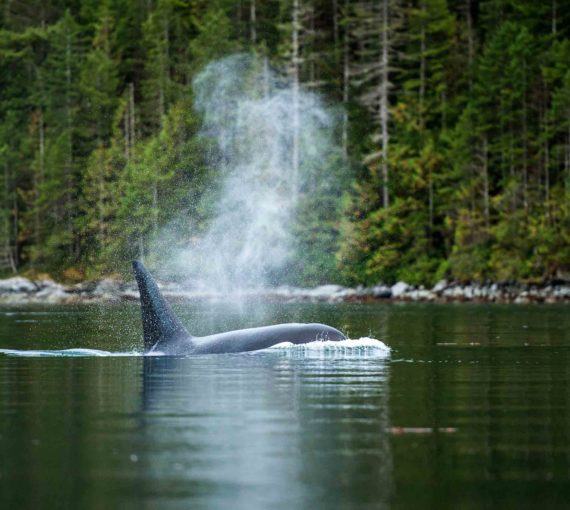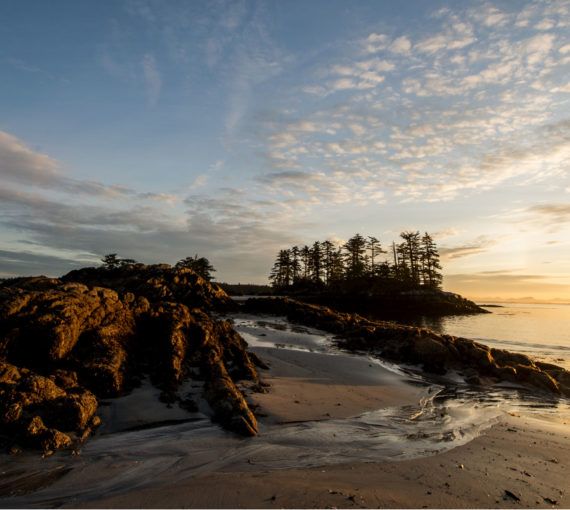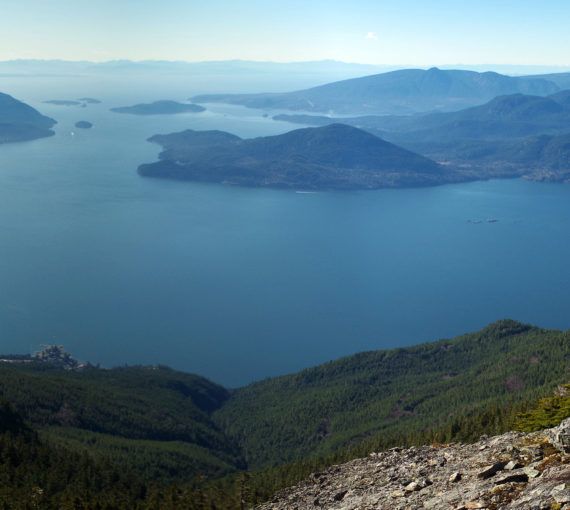
(Photo: Center for Whale Research)
If you’ve seen southern resident orcas in the wild, chances are you were not alone. Each summer, the orcas are mobbed like celebrities, with an average of 20 boats tracking them at any given moment. Unfortunately, all that attention is making it difficult for them to feed when they are literally starving.
Last fall, the federal government committed to giving the whales a break, promising robust measures by spring to reduce threats from vessel traffic. Depressingly, the whale-watching industry is fighting back.
No one disputes that whale-watching represents a threat to the orcas. Vessel noise masks the echolocation signals they use to find food and the presence of boats distracts them from feeding. One study showed the orcas lose up to 25 per cent of their foraging time when vessels are around. That loss might not be sustainable in an age of plenty. With the decline of Chinook salmon, their primary food source, it is completely untenable.
We can address this problem by keeping boats farther from the whales, slowing them down and keeping them out of key foraging areas. Most importantly, we can temporarily ban whale-watching on the population for the next three years, when Fisheries and Oceans Canada expects poor salmon returns. Alongside other measures — including increasing the whales’ prey — a temporary suspension is a responsible step that was also recommended by a multi-stakeholder U.S. task force.
Industry says we can eliminate disturbance by applying a speed limit near whales, arguing this would help reduce noise. But noise is only part of the problem. Science indicates that the number and proximity of vessels matter. Minding all those vessels can shift the whales’ behaviour from feeding to keeping track of their pods and avoiding being struck. Reducing speed, though helpful, is not enough.
We can address this problem by keeping boats farther from the whales, slowing them down and keeping them out of key foraging areas.
Industry also claims the whale-watching fleet is essential for on-water enforcement, providing a viewing distance for other boaters to get behind. But the fleet serves as a powerful magnet for other vessels, creating much of the traffic in the first place. Years of monitoring tell us the best way to ensure good boater behaviour around the orcas is to put enforcement on the water. Across the border, the presence of a Washington State patrol boat has curbed boater violations by 60 to 90 per cent.
You would think that with the declining orca population, commercial operators would want to give them space. After all, they have other marine mammals to watch. Transient orcas and humpback whales are thriving. Indeed, the vast majority of commercial trips focus on them, not southern residents. In 2017, the resident orcas arrived so late in the season that the fleet had no choice but to follow other whales, and it made out fine.
But the industry has a deep-set history of opposing regulation. When the U.S. government proposed an orca sanctuary off the west coast of San Juan Island in 2010, operators fought to stop it. They succeeded.
Not every operator takes the same position. A few have committed not to watch southern residents. Unfortunately, they’re drowned out by less progressive voices.
Government must act not only to save the orcas but also to rescue the whale-watching industry from itself. People come to see wild whales because they are promised respect and good stewardship. If operators don’t step back and let the starving whales search for salmon undisturbed, their customers will notice. That, surely, will affect the industry’s bottom line far more than anything government might table.
This op-ed was originally published in The Vancouver Sun. Michael Jasny is director of marine mammal protection at the Natural Resources Defense Council.
Our work
Always grounded in sound evidence, the David Suzuki Foundation empowers people to take action in their communities on the environmental challenges we collectively face.




